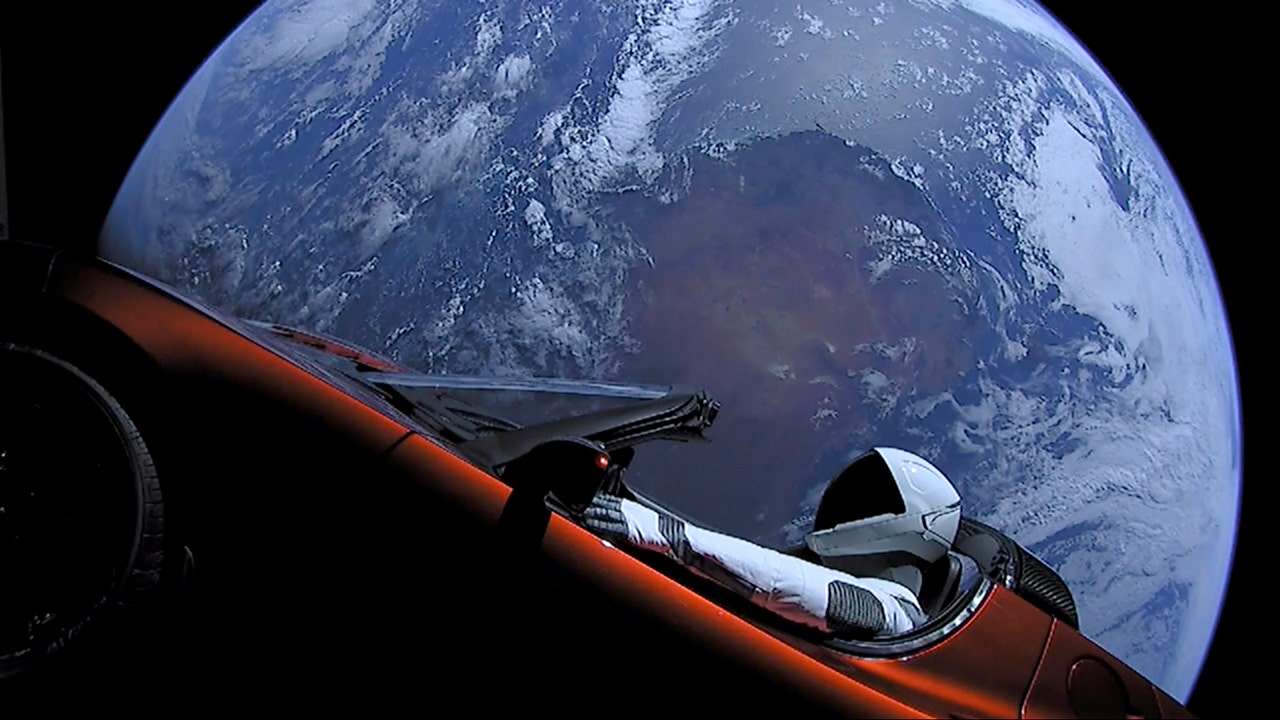Cosmic Surprise: Tesla Roadster Mistaken for Asteroid in Space Discovery
A recent astronomical observation has sent ripples through the scientific community, revealing what many initially believed to be a newly discovered asteroid. However, as the investigation progressed, it became evident that this object was none other than the Tesla Roadster launched into space by Elon Musk in 2018. This unexpected twist raises intriguing questions about space exploration and the intersection of technology and our universe.
The Unexpected Asteroid
In the vastness of space, objects frequently enter and exit the field of view of astronomers. The incident began when astronomers at a leading observatory detected a peculiar object hurtling through the solar system. Initial analyses suggested that it was an asteroid, which spurred excitement among scientists and space enthusiasts alike. The object exhibited characteristics typical of asteroids, including its trajectory and reflectivity, leading to widespread anticipation of a potential new discovery.
However, as researchers delved deeper into the data, they discovered that this “asteroid” was, in fact, the Tesla Roadster, famously sent into orbit by SpaceX during the Falcon Heavy launch. This vehicle, complete with a mannequin named “Starman” behind the wheel, was intended as a demonstration payload, but it has since become an unintentional ambassador of human ingenuity in the cosmos.
Elon Musk’s Vision and the Roadster’s Journey
Elon Musk, the visionary entrepreneur behind Tesla and SpaceX, has always aimed to push the boundaries of technology and exploration. The decision to launch a Tesla Roadster into space was emblematic of his approach to combining technology with a sense of adventure. Musk stated that he wanted to make space exploration “fun” and engaging, capturing the imagination of the public.
The Roadster was launched on February 6, 2018, and was sent into a heliocentric orbit around the Sun. Its mission was not only to demonstrate the capabilities of the Falcon Heavy rocket but also to serve as a symbol of human achievement and a reminder of our potential to explore beyond our planet.
Since its launch, the Tesla Roadster has traveled millions of miles, orbiting the Sun while transmitting images and data back to Earth. Its journey has sparked curiosity and discussions about the future of space exploration and the role of technology in our quest to understand the universe.
Implications for Space Exploration
This incident, where the Tesla Roadster was mistaken for an asteroid, raises several significant implications for the field of space exploration:
- Public Engagement: The blending of technology with space exploration fosters public interest and engagement. The sight of a car orbiting the Sun is a captivating image that resonates with many, making the concept of space exploration more relatable.
- Data Accuracy: The mix-up highlights the importance of accurate data analysis and the challenges astronomers face in identifying objects in space. As technology advances, so too must our methods for tracking and identifying celestial bodies.
- Future Missions: The incident may inspire future missions that incorporate unique payloads, encouraging creativity in the types of objects sent into space. This could lead to a new era of exploration that prioritizes entertainment alongside scientific discovery.
Technological Intersection with Astronomy
The convergence of technology and astronomy is a fascinating aspect of modern exploration. With advancements in satellite technology, telescopes, and data analysis tools, astronomers are equipped like never before. However, as seen with the Tesla Roadster, these advancements also come with their own set of challenges.
Moreover, the integration of artificial intelligence in analyzing astronomical data could help mitigate such errors in the future. AI algorithms can process vast amounts of information in a fraction of the time it would take a human, potentially leading to more accurate identifications of celestial objects.
The Tesla Roadster: A Symbol of Innovation
The Tesla Roadster’s journey through space serves as a poignant reminder of human innovation and creativity. It’s not just a car; it’s a statement about our aspirations as a species. As we look toward an uncertain future in space exploration, the Roadster embodies the spirit of adventure that drives humanity to venture into the unknown.
As it orbits the Sun, the Tesla Roadster continues to capture hearts and minds, serving as a beacon of what is possible when technology and imagination collide. It stands as a testament to the capabilities of modern engineering and the relentless pursuit of discovery, inspiring future generations to look to the stars.
Conclusion: A New Perspective on Space Exploration
The revelation that the Tesla Roadster was mistaken for an asteroid highlights the unpredictable nature of space exploration. It underscores the importance of curiosity and the willingness to learn from mistakes. As we continue to make strides in understanding our universe, let us embrace the unexpected surprises that come our way.
In a world where technology and exploration are increasingly intertwined, the cosmic surprise of the Tesla Roadster reminds us that the journey is just as important as the destination. With each new discovery, we not only expand our knowledge but also deepen our appreciation for the wonders of the cosmos.
As we look ahead, one can only wonder what other surprises await us in the vast expanse of space. The Tesla Roadster’s journey is far from over, and its story is a profound reflection of human ambition and the desire to explore beyond our earthly confines.
See more Future Tech Daily

